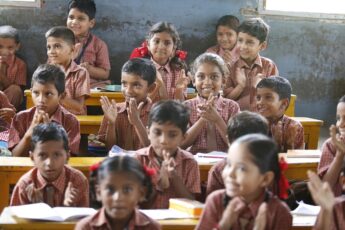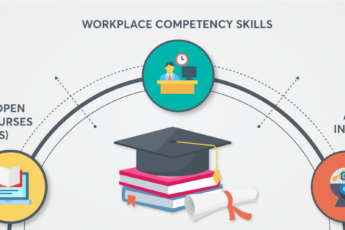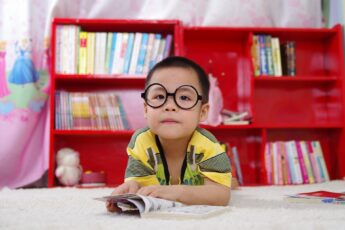Why We Need To Develop A Multilingual Proficiency

Ours is a world brimming with myriad cultures. Often, large segments of this teeming population have a working knowledge of more than two languages, making them multilingual. Estimates indicate that now on an average, one in three people all over the world are bilingual or multilingual (Wei, 2000).
Given India’s diversity, many children across our nation grow up in a multilingual environment, surrounded by varied languages and dialects.
How India’s Multilingualism Gives Us A Benefit
Understanding and using more than one language is a critical benefit, opening doors for more academic and employment opportunities in a highly competitive world. A study conducted on bilingual and monolingual Konds-speaking children in Odisha (Mohanty, 2000) showed multilingual children both inside and out of schools had an advantage over their monolingual peers with respect to their cognitive and intellectual skills. Says Dr. Nandini Chatterjee Singh (PhD, Cognitive Neuroscientist from National Brain Research Centre, on deputation to UNESCO-MGIEP), “Unlike everywhere else in the world, in India, we do everything differently. We are the only country in the world that exposes our children to read two distinct writing systems.”
In a TedX talk, applied linguistics professor Panos Athanasopoulos remarked that we do not necessarily need both eyes to see as one eye does the job just as well. However, having a pair of functional eyes helps us see three dimensional objects, in high definition. Both eyes see objects in slightly different dimensions; the brain then maps these images and combines them into one multidimensional image. The same way, learning and using multiple languages present different world views and cultures to the mind, which helps us see the world in a different way.


Challenges Multilingual Classrooms Face
A multilingual student population requires educators and Anganwadi workers who can converse or simply understand multiple languages. This is especially true of many primary education facilities across India, where one teacher/worker is responsible for imparting knowledge on various subjects. To explain content when they are not well-versed in at least one common language themselves, will deprive children of a chance at holistic early education and the opportunity to flourish in a global environment.
However, realistically, in a country with 22 official languages and numerous dialects (recognised and otherwise), one teacher may not always be proficient in the language(s) of a respective region. Few early childhood educators are fluent in more than one language, and fewer receive training in cultural and linguistic diversity. Additionally, today’s population speaks such an array of languages and dialects that it is entirely possible for bilingual or even multilingual educators to have no context for their students’ languages.
Lessons To Support Multilingualism In The Classroom
- Non-verbal communication is key: When encountering an unfamiliar dialect or language in the classroom, educators and Anganwadi workers can increase responsiveness by active listening and gesturing. This also helps communicate caring to a child, especially when you cannot understand or speak their first language.
- Support development of multiple languages simultaneously: Data and multiple studies establish how bilingual and multilingual children outperform their monolingual peers. Every early learning stakeholder must be similarly aligned towards fostering inclusive growth by enhancing multi-language acquisition.
- Encourage learning in pairs: Strong social and emotional foundations support all other learning, a fact that authors Iliana Alanís and María G. Arreguín-Anderson prove in their paper ‘Paired Learning: Strategies for Enhancing Social Competence in Dual Language Classrooms.‘ Their observation of children in dual language classrooms, from preschool to first grade led them to the conclusion that learning in pairs increased conversational opportunities for dual language learners and greatly reduced their stress. This in turn led to better overall learning outcomes.
- Take time to explain one word in multiple languages: Languages often have varying degrees of similarity to each other, something that educators and Anganwadi workers can use to enhance a child’s foundational literacy skills. From here, the explanation can move to how one word changes across languages. For example, the word ‘flower’ is pronounced and written the same way in Hindi (फूल) and in Marathi (फूल).
Learning to speak and read in multiple languages is healthy for the brain as it requires more concentration, focus and thought, which conditions our mind to handle a higher cognitive load. Learning a language alongside a child’s native language prepares them for the future, opening up a world that is not accessible to them otherwise. Additionally, a workforce filled with multilingual workers, who can speak different languages with confidence, will help improve income levels and socio-economic quality in our country.
At Square Panda India, we believe that in a multilingual country like India, children AND educators need to be well-versed in more than one language to properly succeed in the future. Our Aarambh initiative, which immerses educators, Anganwadi workers, and children in local languages, will greatly impact India’s early learning landscape. Learn more: ecce.squarepanda.in
Stay updated and follow us:
Facebook – https://www.facebook.com/SquarepandaSquarePandaIndia/
Twitter – https://twitter.com/squarepanda_edu
LinkedIn – https://www.linkedin.com/company/square-panda-in
Instagram – https://instagram.com/squarepanda.india
YouTube – https://youtube.com/channel/UCaN_P-_l30Rd0FmsGrhQLrQ




Leave a Comment